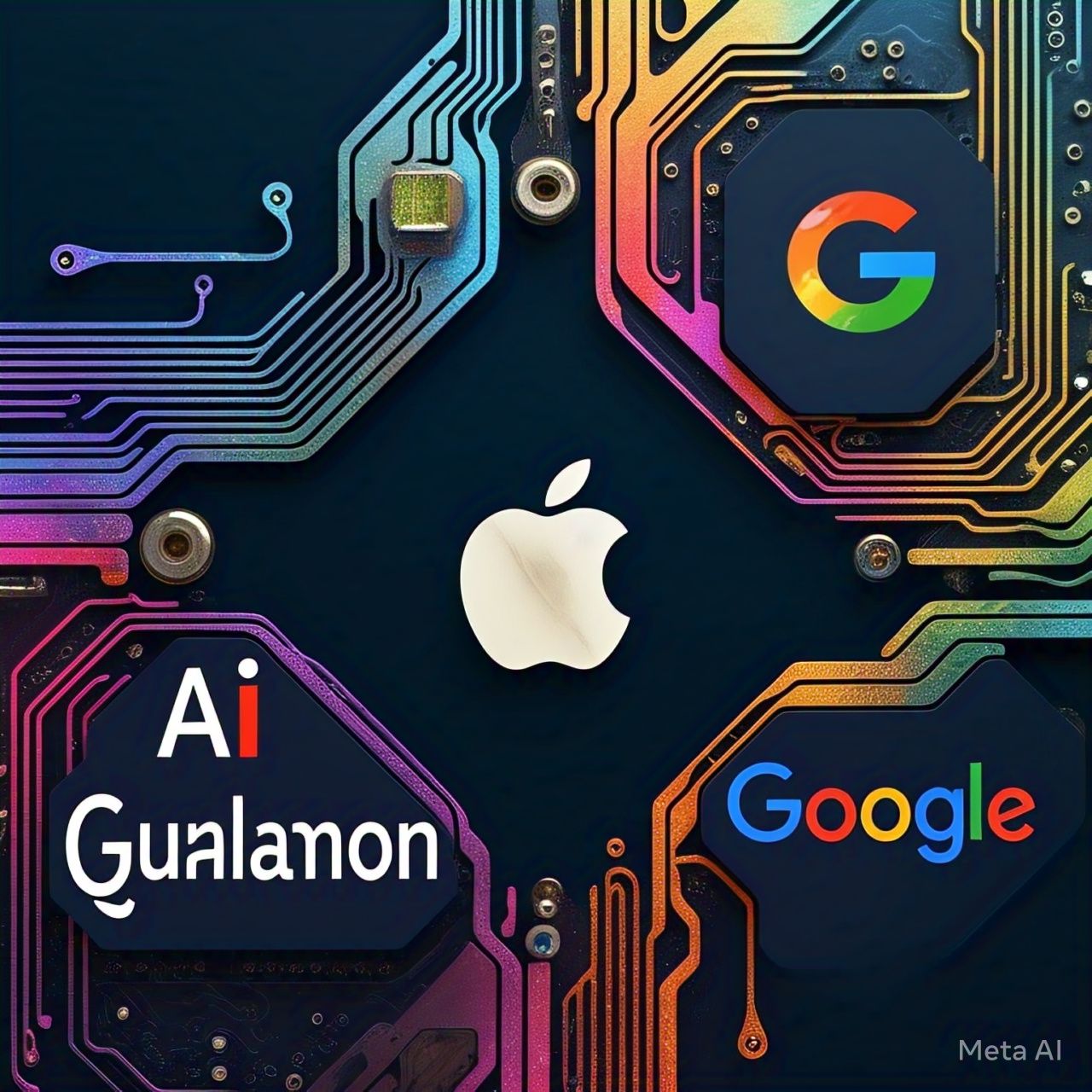Introduction
The race for AI dominance in mobile chips is heating up as tech giants Apple, Qualcomm, and Google compete to deliver the most advanced AI-powered processors. With smartphones becoming more intelligent, AI mobile chips now play a crucial role in enhancing performance, battery life, and real-time machine learning capabilities.
Each company brings its own strengths and unique approach to AI processing, from Apple’s seamless integration with iOS to Qualcomm’s industry-leading connectivity and Google’s AI-first strategy. But which one is leading the AI mobile chip war? Let’s dive into the battle between Apple’s A-series Bionic chips, Qualcomm’s Snapdragon processors, and Google’s Tensor chips to understand how they stack up against each other.
Apple’s A-Series Bionic Chips: Seamless Hardware-Software Integration
Apple has been at the forefront of AI-powered mobile chip development with its A-series Bionic processors, found in iPhones and iPads. With a powerful Neural Engine, Apple’s chips are designed to work seamlessly with iOS and optimize AI-driven tasks like computational photography, voice recognition, and real-time machine learning.
Key Features of Apple’s AI Chips:
- Neural Engine: Dedicated AI cores handle trillions of operations per second, powering features like Face ID, Live Text, and Siri.
- Optimized for iOS: Apple tightly integrates its hardware and software, ensuring AI models run efficiently on-device.
- Energy Efficiency: AI-powered optimizations extend battery life by intelligently managing power consumption.
- Advanced Machine Learning: The A-series Bionic chips use on-device processing for privacy-focused AI features, reducing reliance on cloud computing.
Apple’s Strengths:
✔ Superior integration with iOS and ecosystem. ✔ Industry-leading performance per watt, ensuring efficiency. ✔ Best-in-class AI-driven computational photography.
Apple’s Weaknesses:
❌ Limited AI customization compared to open platforms. ❌ No AI-powered connectivity advancements like Qualcomm’s 5G-AI synergy.
Qualcomm’s Snapdragon Processors: AI-Powered Performance and Connectivity
Qualcomm is a dominant force in the mobile chip market, supplying processors to Samsung, OnePlus, and other Android manufacturers. Snapdragon chips are known for their AI-focused Hexagon processors, which deliver powerful machine learning capabilities across different applications, from gaming to photography and 5G connectivity.
Key Features of Qualcomm’s AI Chips:
- Hexagon AI Engine: Qualcomm’s dedicated AI cores accelerate on-device AI tasks like speech processing, enhanced camera effects, and real-time translation.
- 5G and AI Integration: Snapdragon chips combine AI with 5G to optimize network performance and adaptive power management.
- Elite Gaming AI: AI optimizations enhance mobile gaming performance, ensuring smoother frame rates and reduced latency.
- Multi-Vendor Compatibility: Unlike Apple, Qualcomm’s chips are used by various smartphone brands, offering a diverse range of AI experiences.
Qualcomm’s Strengths:
✔ Industry leader in 5G and AI-powered connectivity. ✔ Advanced AI-enhanced gaming experiences. ✔ AI-driven camera optimizations for better image processing.
Qualcomm’s Weaknesses:
❌ Less efficient than Apple’s chips in power consumption. ❌ Heavily reliant on Android software optimizations, leading to inconsistencies across brands.
Google’s Tensor Chips: AI-First Mobile Processing
Google took a bold step with the launch of its Tensor chips, which power Pixel devices with a focus on AI-driven efficiency rather than raw performance. Built in collaboration with Samsung, Tensor chips prioritize machine learning and computational photography, offering an experience uniquely tailored to Google’s AI services.
Key Features of Google’s AI Chips:
- Custom TPU (Tensor Processing Unit): Specially designed for AI tasks like Google Assistant, voice-to-text, and real-time translation.
- Computational Photography: Tensor enables AI-powered features like Magic Eraser, enhanced Night Sight, and Real Tone skin tone adjustments.
- Adaptive AI: Tensor continuously learns user behavior to improve efficiency and performance over time.
- On-Device Google AI: Google Assistant, Translate, and other AI features run faster and more securely on Tensor chips.
Google’s Strengths:
✔ AI-first approach optimized for Google’s software ecosystem. ✔ Superior voice and language processing compared to competitors. ✔ Best-in-class computational photography and AI-powered imaging.
Google’s Weaknesses:
❌ Lags behind Apple and Qualcomm in raw processing power. ❌ Not widely adopted outside of Google’s Pixel lineup.
Apple vs. Qualcomm vs. Google: Who’s Winning the AI Chip War?
| Feature | Apple A-Series Bionic | Qualcomm Snapdragon | Google Tensor |
|---|---|---|---|
| AI Processing Power | ✅✅✅✅ | ✅✅✅ | ✅✅✅ |
| Energy Efficiency | ✅✅✅✅✅ | ✅✅✅ | ✅✅ |
| Computational Photography | ✅✅✅✅✅ | ✅✅✅ | ✅✅✅✅✅ |
| Gaming AI | ✅✅✅ | ✅✅✅✅✅ | ✅✅ |
| 5G & Connectivity | ✅✅ | ✅✅✅✅✅ | ✅✅ |
| Voice & Language AI | ✅✅✅ | ✅✅✅ | ✅✅✅✅✅ |
| Software Optimization | ✅✅✅✅✅ | ✅✅✅ | ✅✅✅✅ |
| Adoption & Scalability | ✅✅✅✅✅ | ✅✅✅✅✅ | ✅✅ |
✅ = Performance ranking (higher is better)
Each company is excelling in different areas:
- Apple leads in energy efficiency, computational photography, and seamless ecosystem integration.
- Qualcomm dominates in 5G, gaming AI, and diverse Android compatibility.
- Google’s Tensor chips excel in AI-driven personalization, voice processing, and photography.
The Future of AI Mobile Chips
As AI mobile chips become more sophisticated, we can expect:
- Even faster and more efficient NPUs (Neural Processing Units).
- Greater AI-driven personalization, tailoring smartphone experiences based on user habits.
- Advanced AI-powered camera enhancements, bridging the gap between mobile and DSLR quality.
- More on-device AI processing, reducing reliance on cloud services for better privacy.
- Tighter hardware-software integration, improving AI performance across devices.
The AI mobile chip war is far from over, with each company pushing boundaries to redefine smartphone intelligence. Whether you prioritize performance, battery life, gaming, or AI-driven experiences, the battle between Apple, Qualcomm, and Google ensures the future of mobile AI will be faster, smarter, and more innovative than ever before.
Conclusion
The AI mobile chip war is shaping the future of smartphones, with Apple, Qualcomm, and Google competing to deliver the most advanced AI-driven experiences. Whether it’s Apple’s power efficiency, Qualcomm’s connectivity, or Google’s AI-first approach, each chip has unique strengths that cater to different users.





